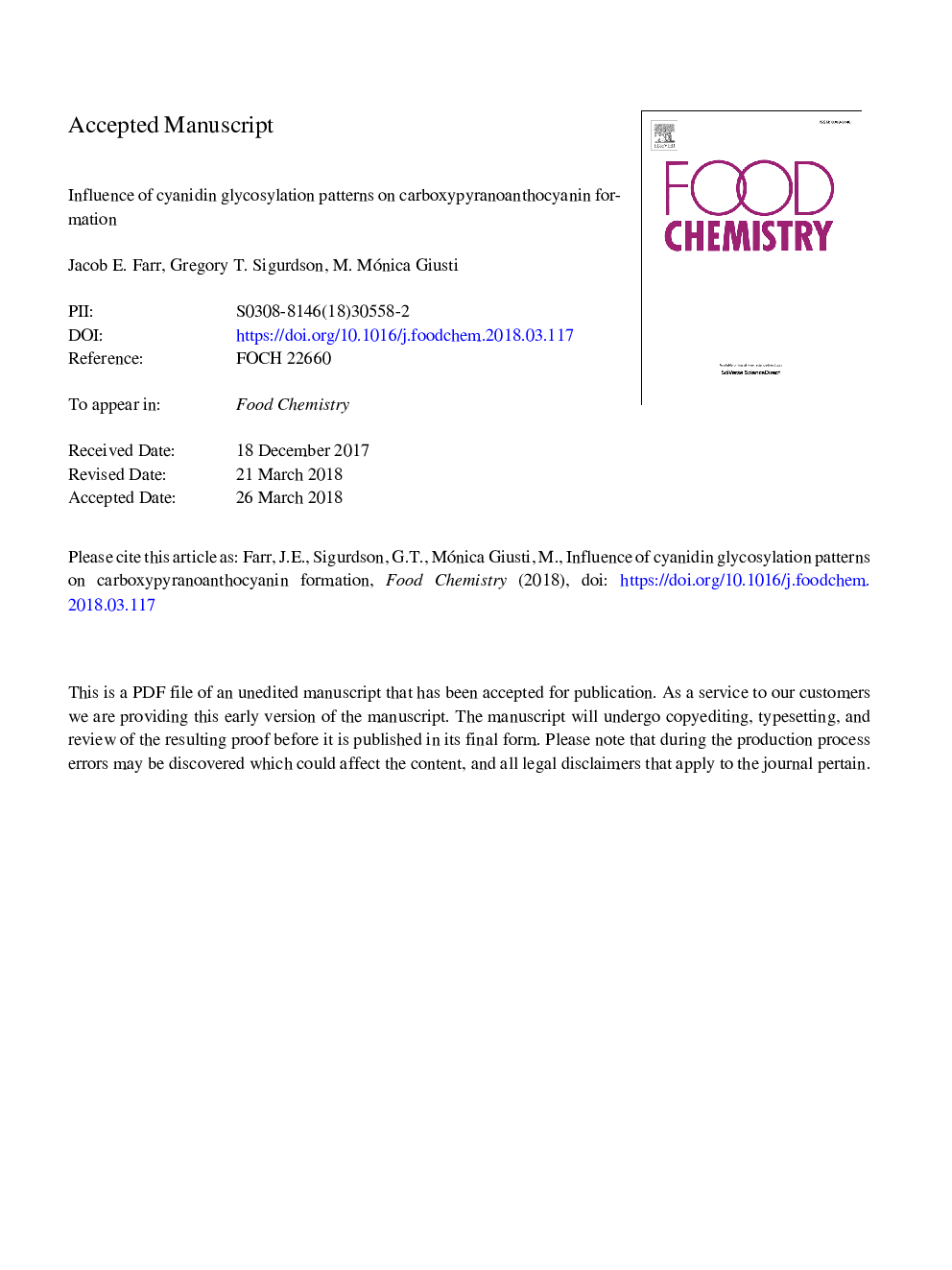| Article ID | Journal | Published Year | Pages | File Type |
|---|---|---|---|---|
| 7585099 | Food Chemistry | 2018 | 34 Pages |
Abstract
Anthocyanins can condense with compounds having enolizable groups to form pyranoanthocyanins. These pigments are less susceptible to degradation and color changes associated with nucleophilic addition common to anthocyanins. This study aimed to evaluate the impact of glycosylation patterns of anthocyanins on carboxypyranoanthocyanin formation. Nine cyanidin derivatives were isolated by semi-preparative HPLC. Pyruvic acid was added to induce pyranoanthocyanin formation. Composition (HPLC-MS/MS), spectra (absorbance 380-700â¯nm), and color (CIEL*c*h*) of solutions were monitored during 31â¯days storage at 25â¯Â°C. Cyanidin-3-glycosides with 1â¯ââ¯6 disaccharides produced the highest pyranoanthocyanin yield (â¼31%), followed by Cyanidin-3-monoglycosides (â¼20%); 1â¯ââ¯2 disaccharides produced the least proportions of pyranoanthocyanins (5-7%). Cyanidin-3-arabinoside converted to pyranoanthocyanins but degraded quickly (3% yield) under these conditions. No pyranoanthocyanins were formed from Cyanidin-3-sophoroside-5-glucoside. Glycosyl bonds were more critical than the size of the substitution alone, further supported by Cyanidin-3-(glucosyl)-(1â¯ââ¯6)-(xylosyl-(1â¯ââ¯2)-galactoside) yield (11%). Pyranoanthocyanins were hypsochromically shifted and had higher hue angles than their respective anthocyanins.
Related Topics
Physical Sciences and Engineering
Chemistry
Analytical Chemistry
Authors
Jacob E. Farr, Gregory T. Sigurdson, M. Mónica Giusti,
